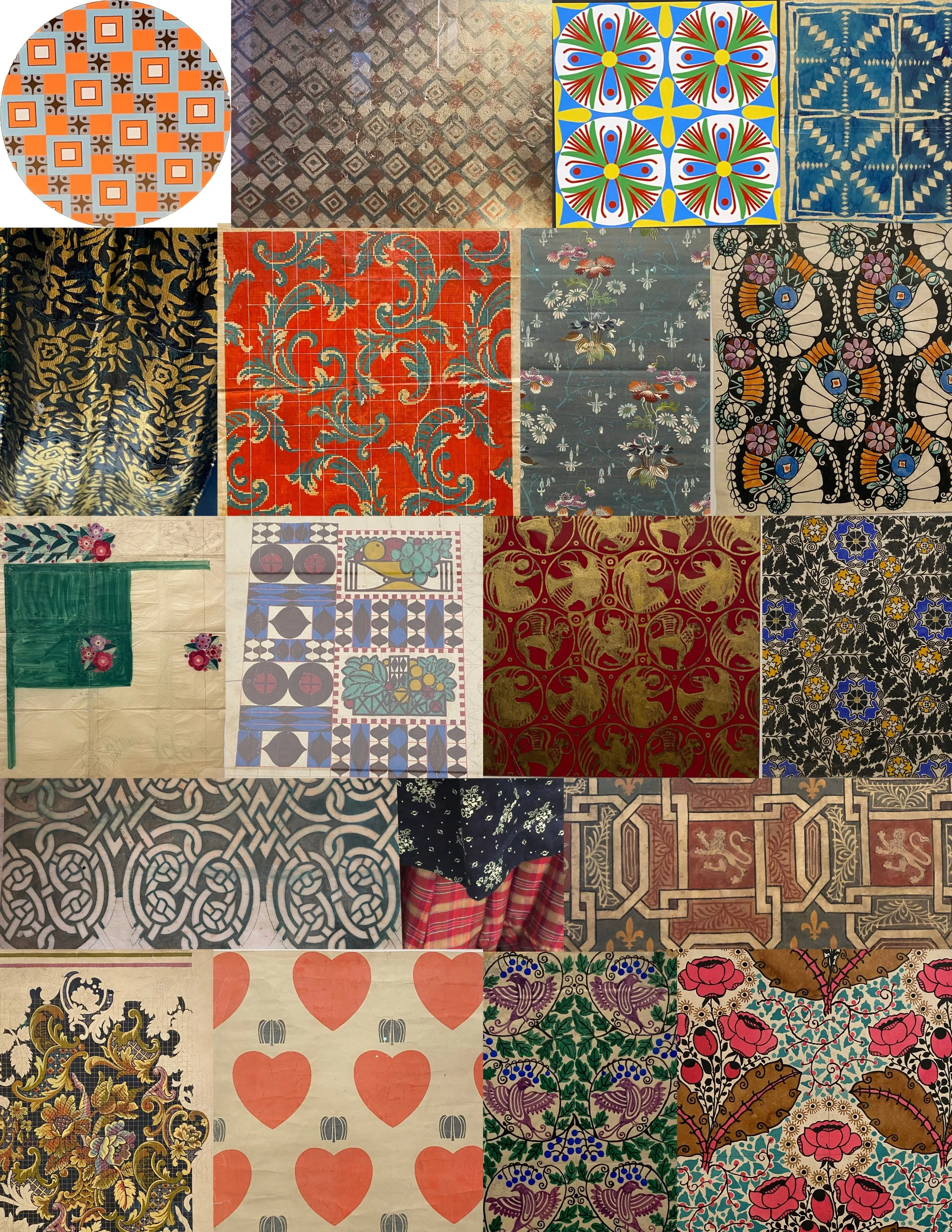On Pattern: Simple to Infinite
The magic of pattern lies in its ability to take the simplest elements and, through repetition, build worlds of complexity and wonder. At its root, pattern reflects the deep order of nature — the rhythm of waves, the unfolding of leaves, the geometry of stars. It abstracts the world into archetypal forms, distilling what’s fleeting into shapes we can carry across cloth, walls, and objects.
These simple patterns also ripple through time, linking us to the hands and imaginations of those who came before us. From ancient Egypt’s lotus bands and Greek meanders to Islamic tilework, Japanese seigaiha waves, Celtic knots, Malian mud cloth, Hopi basketry, and the Viennese Secession’s geometric grids, pattern crosses cultures and centuries, a thread woven through human history.
At its heart, the mechanism remains unchanged — tiling, symmetry, reflection. Like a kaleidoscope, where small fragments, mirrored and turned, unfold into unexpected worlds, pattern transforms small human marks into something boundless.
Each pattern reminds us that from the smallest gesture, a universe can grow; that in repetition, we find not just beauty, but belonging — to nature, to time, and to one another. It is where the fleeting becomes lasting, and the simple becomes infinite.

